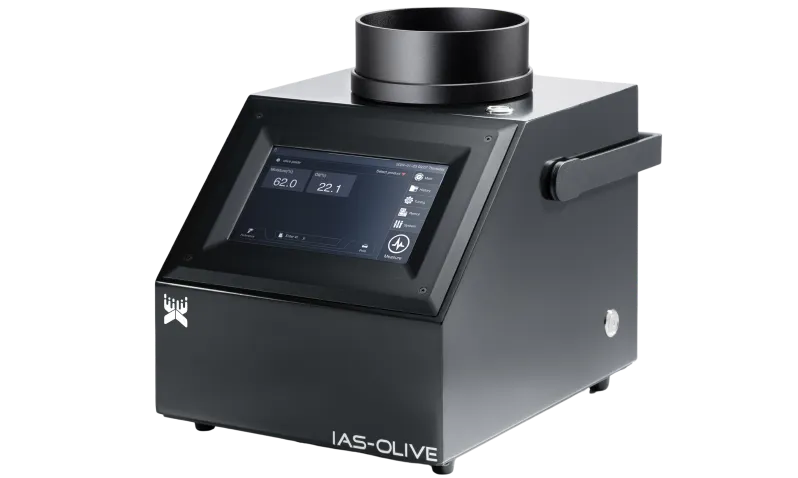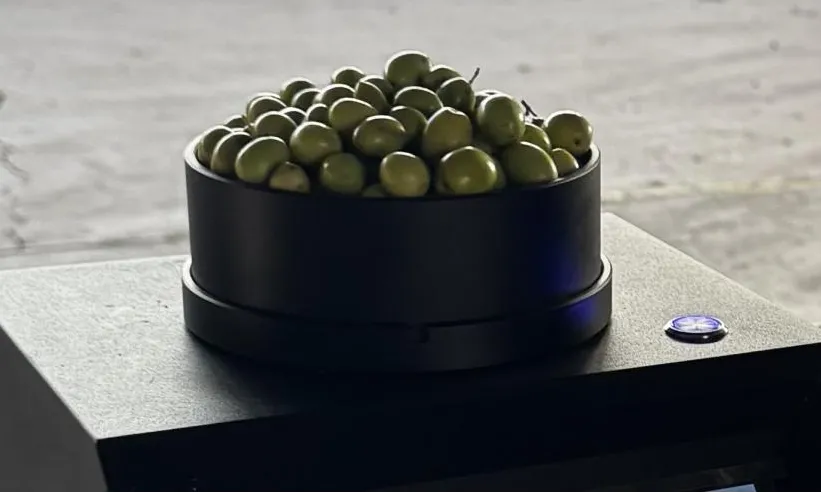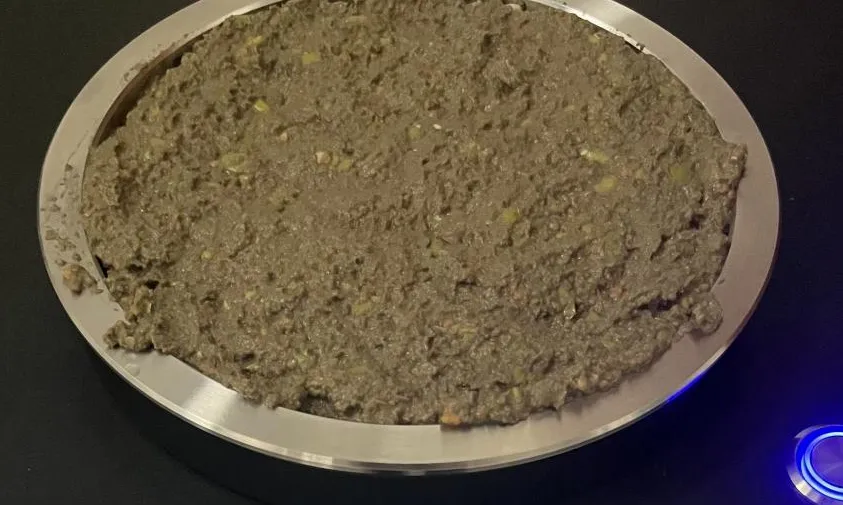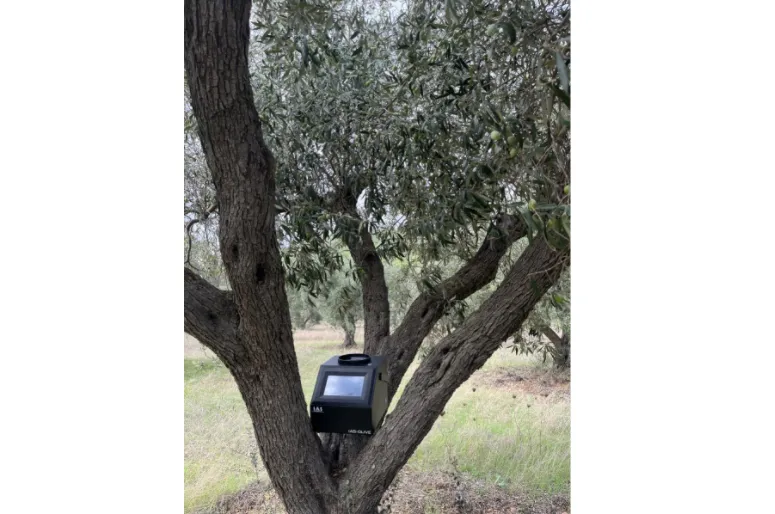By Jasmine Nan,
Senior Application Engineer, IAS Global Pte. Ltd.
In recent years, technological innovation has begun to reshape operations in olive mills, pushing the sector toward increasingly precise, responsive, and efficient management.
The growing demand for quality, traceability, and sustainability in the extra virgin olive oil supply chain now calls for advanced tools capable of delivering rapid and reliable information to support operational decisions.
This is the context in which IAS-OLIVE was developed, a new portable device by IAS ANALYSIS designed to measure the actual composition of whole olives before milling and pomace at the end of the extraction process in just a few minutes.
Specifically designed for millers and cooperatives, IAS-OLIVE enables fast, real-time analyses that provide an immediate snapshot of the raw material, both before and after extraction, directly in the field or along the processing line.

What is IAS-OLIVE and What Does It Measure?
IAS-OLIVE is a compact, battery-powered NIR (Near-Infrared Spectroscopy) analyzer, engineered for daily use in the field or at the mill.Based on advanced calibration models combining cutting-edge chemometrics and artificial intelligence, IAS-OLIVE estimates key parameters of fresh olives and pomace, supporting rapid and data-driven decisions across the supply chain.The analysis is non-destructive, fast, and requires no sample preparation, no grinding or pre-treatment needed.
It measures:
▸ On whole olives:

• Total oil content (%), both:
– On wet basis (as harvested)
– On a dry basis (excluding water content)
• Processing Efficiency Index (%): a practical yield indicator calibrated to the mill’s equipment and processing settings
• Moisture (%)
• Natural fruit acidity (%)
▸ On pomace:

• Residual oil (%), both on wet and dry basis, to evaluate the portion of oil not extracted
• Residual moisture (%), to assess water retention during processing
One Device, Many Uses: In the Field and in the Mill
The introduction of IAS-OLIVE enables faster, data-driven operational decisions with tangible technical and operational benefits.

▸ In the field – For harvest planning or evaluating purchased batches
Operators can measure oil potential directly in the grove, helping define the optimal harvest timing. Buyers can base negotiations on a yield estimate rather than on variety or batch weight alone.In general, this means moving from subjective perceptions or indirect references, such as results from previous milling runs, often unreliable due to variety and area variability, to direct, simple, and repeatable measurements.
▸ At mill intake – For batch classification and flow optimization
Within minutes, incoming batches can be analyzed and classified, helping to better organize the processing queue and reduce waiting times.After an initial period of use, the analyzer can be calibrated to the mill’s own “Processing Efficiency Index”, a parameter that, taking into account the technical characteristics of the milling system and the operator’s processing choices, enables practical yield forecasting from whole olives.This advantage is particularly evident for cooperatives and toll processors: incoming batches can be analyzed in the presence of the grower. Based on the result, it is possible to immediately determine compensation or schedule oil pickup for growers who only request processing, avoiding long waits or shift scheduling issues.Naturally, as with any operational innovation, this shift requires a period of adaptation and a willingness to embrace change. But for those seeking more control, better workflows, and improved efficiency, the benefits will become quickly apparent.
▸ During extraction – Monitor and experiment in real time
Whether in 2-phase or 3-phase systems, pomace analysis allows real-time evaluation of extraction efficiency, enabling controlled experiments with operating parameters (e.g. temperature, speed, timing) and helping to develop tailored “recipes,” with immediate feedback to understand how and when to act during production.The residual oil value from pomace, available on both wet and dry basis, is crucial. The dry-basis measurement isolates the true unextracted oil content, excluding the water component. This enables more reliable comparisons across batches, lines, and production days, minimizing interpretation errors related to moisture.
Scientific Reliability
IAS-OLIVE calibrations are based on thousands of real samples, representative of different varieties, climate zones, and ripening stages. The predictive model was developed with the support of specialized laboratories, ensuring robustness, repeatability, and adaptability to a wide range of operating conditions.That said, it is important to note that NIR instruments, while widely recognized for their reliability across many applications, are first-level analysis tools: they are designed to support fast, informed decisions in the field or along the line. They are not intended, and cannot, replace laboratory testing, which remains the standard for official certifications and confirmatory analysis.
Looking Ahead: A Smarter and More Transparent Olive Sector
IAS ANALYSIS envisions a more transparent, informed olive oil supply chain, capable of maximizing the value of every single batch.With IAS-OLIVE, NIR spectroscopy, until now reserved for laboratories and large-scale operations, is now entering mills and olive groves as a practical, portable, and strategic solution.Because every batch of olives has a story.And with the right tools, that story can be read instantly, enabling better, faster, and fairer decisions across the entire supply chain.
For more information, contact: [email protected]
Or visit: https://it.ias-glb.com/shop/ias-olive
Italian version published on Olivo News:
https://olivonews.it/ias-olive-il-nuovo-alleato-dei-frantoi-oleari/




